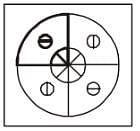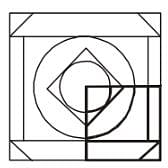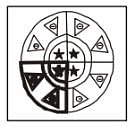DSE Odisha TGT Science CBZ Mock Test - 6 - OTET MCQ
30 Questions MCQ Test DSE Odisha TGT Mock Test Series 2024 - DSE Odisha TGT Science CBZ Mock Test - 6
What is the primary concern raised regarding the audit of the Rafale deal?
What toy did George Lerner create for Hasbro company in 1952?
| 1 Crore+ students have signed up on EduRev. Have you? Download the App |
What is the purpose of the Dedicated Freight Corridor (DFC) project in India?
The name of the famous mathematician who is credited with discovering the total value of the very first 100 natural numbers is
Which answer figure will complete the pattern in the question figure?

Which answer figure will complete the pattern in the question figure?

Find out which answer figures will exactly make up the question figure?

On which number of term does 78 falls in the A.P. 3, 8, 13, 18, … is 78?
In a given number 7834329513, we interchange the first and the second digits, the third and the fourth digit and so on. Then which digit will be sixth from the right?
Assertion (A): In a progressive classroom, a teacher should always cater to the individual differences of the children in the class.
Reason (R): The main goal of progressive education is to get students to have a hands-on learning experience.
Choose the correct option.
In Vygotsky's theory, which aspect of development gets neglected?
The initial comprehensive attempt to create teaching methods on scientific principles was made by
Which of the following student reveals the "Logical Mathematical" intelligence, as proposed by Gardner?
How does NEP 2020 address the issue of school infrastructure development?
Phonological awareness refers to the ability to:
Chlorophyll in chloroplasts is located in
Greatest extent of adaptation to various environments is found in
The structure of the cell membrane was studied in detail after the invention of the _____
Persistent nucellus is called as______________and is found in __________.
In maltose, two glucose units are linked by a
In yeast, during fermentation the glycolysis pathway leads to
Select the correctly written botanical/zoological name.
Symbiotic prokaryotic organism which fixes atmospheric N2 :-
The portion of embryo axis above cotyledons is




















